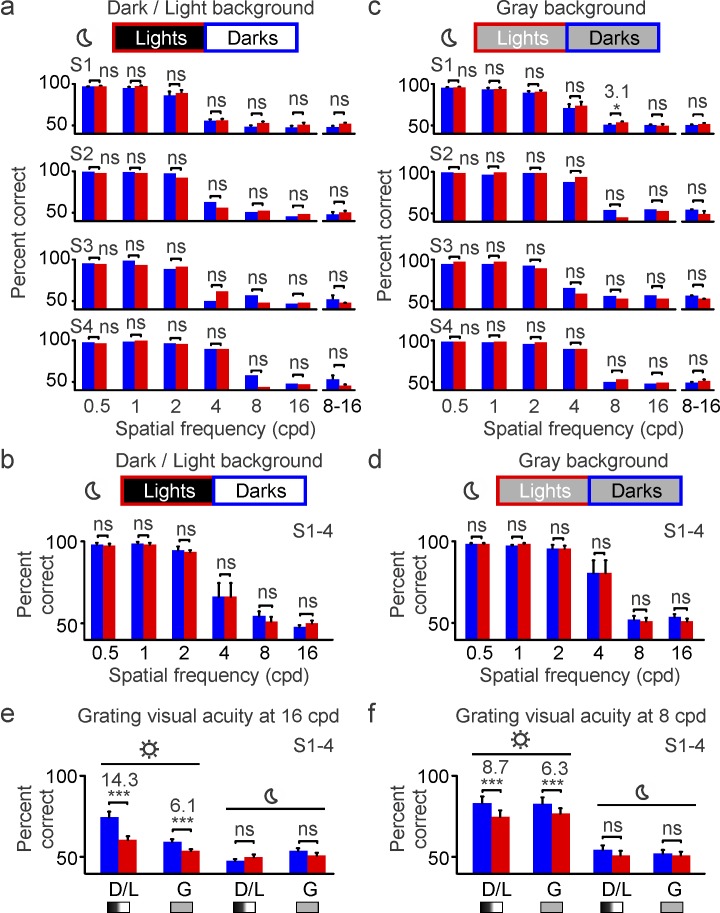Figure 5.
Grating visual acuity is similar for darks and lights under low luminance (maximum: 0.0312 cd/m2). (a) Grating visual acuity measured in four different subjects (S1–S4) at low luminance (moon icon). The percentage correct is calculated as an average of four different stimulus durations for S1 (1,600 trials per spatial frequency) and with 150-ms stimulus duration for S2–S4 (200 trials per spatial frequency). There are no differences in grating resolution between darks (blue) and lights (red) at 16 and 8–16 c/° because these spatial frequencies are not visible at low light (percentage correct is at chance level). (b) Grating visual acuity measured on dark and light backgrounds averaged across the four subjects. (c–d) Same as in (a–b), but for gray backgrounds. (e) Comparison of dark and light visual acuity at 16 c/° for high-luminance (sun icon) and low-luminance conditions (moon icon), on dark/light (D/L) and gray (g) backgrounds. (f) Same as (e), but for 8 c/°. *p < 0.05, ***p < 0.001, ns: not significant. Error bars show the standard error of the mean.

